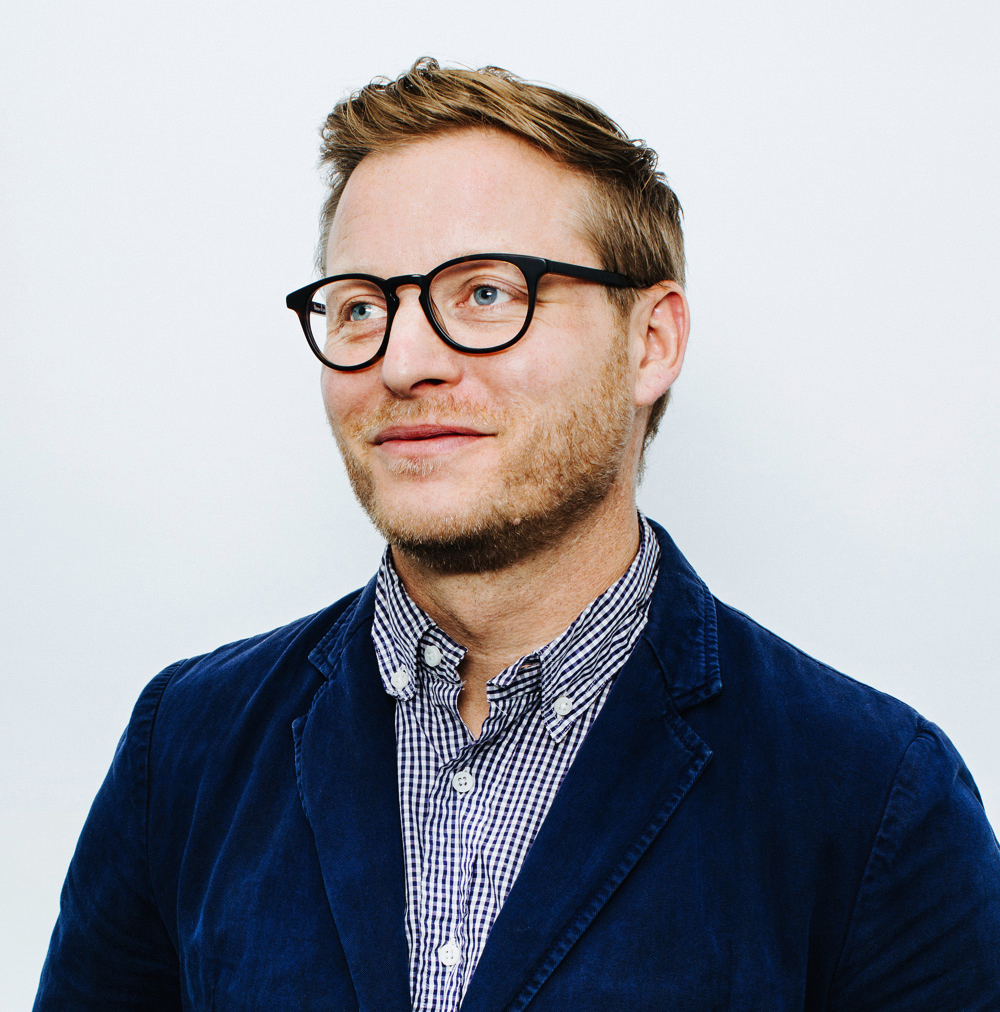Nick Neubeck has always pursued a creative path, but his job as the creative director for Hearst Magazines Digital Media marks his first deep-dive into editorial design. That said, he’s not intimidated by major brands. Before this, he was running his own design studio, working with international clients like Nike and Levi’s. Here, the design expert talks about how designing skateboards prepared him for online media and what the digital age means for young designers.
Did you always know you wanted to go into editorial?
No, not really, but I think it’s exciting. I’ve done advertising and I’ve done e-commerce, and I think editorial is exciting because it’s a different challenge thinking about what the reader will want. It’s much more about engagement.
Tell me a little bit about your career right out of college.
I started out as a graphic designer for a skateboard company. It was fun. When I first started, I did millions of skateboard graphics and print ads. We were doing a little bit for the web then, but it wasn’t such a big deal. It’s interesting looking at what I’m doing now, because there are a lot of parallels. When I was doing stuff for the skateboard company, there wasn’t a lot of process or planning that went on, so if someone did a new trick, you had to make an ad really quickly. It was good training for what we do now. So much of what we do is so news-based, so if someone falls on the runway or gets married or divorced, we have to create content immediately that’s going to surround that.
What’s a typical day like for you?
Our team is essentially a central creative agency. We service all the magazines and all the sites. I have designers, photo editors, a photo production team, and animators. My project manager helps me figure out where we are with big projects, so we usually meet in the morning, and then I go talk to designers. A lot of times there’s a photoshoot going on, so I make sure everything is going well. We have some new Snapchat channels that are launching soon, so we have to get assets out to those teams. It’s a lot of juggling, but it’s not like we’re totally reinventing the wheel every time. We have a set design and a base set of rules, because we want it to be really good and on-brand, but in digital, everything is so fast that if we can’t get the story up right away, the ship has sailed.
When you’re looking for young designers to join your team, what kind of skills should they have?
You almost have to have something else: Are you a designer that can illustrate? Are you a designer that can animate? Are you a designer that’s good at collage? It’s different from magazines where one person lays out the magazine and then another person does something else. We’re creating in a bunch of different ways all the time. I’ll give people an idea, but I like when they come back to me having done what I told them to do but tell me, “I also did this.” Or if people say, “I tried that, it didn’t quite work. I also tried this and this is what I think is better.” With so many different channels and brands, no one person can come up with all the ideas.
What advice would you give designers who want to break into social media?
A lot of it is knowing design, color, and composition—and also being very nimble. It’s thinking about the reader. We’re not just putting things out there that are the most beautiful things ever—they have to have a balance between good design, what the reader wants, and what’s going to drive excitement. I always think about it as a design equation: Here’s what the brand is, here’s the message we’re trying to send, and here’s what the reader wants. What does that look like?
It seems like video is the new frontier. How is your team positioned to deal with it?
I don’t think you can take things you’ve done in the past and adjust them. I think you have to think of how it’s going to live on Snapchat and those different channels first. Most people are watching this on their phone with the volume turned off, so a lengthy interview of a talking head isn’t going to work. It’s like making really fast silent movies that are going to get people engaged.
What was the most important mistake you made in your career?
I think it would have been good to take some more design risks. I may have been intimidated working with larger companies when I was younger or inexperienced. It probably would have been better to push the creativity a little bit. I think it would behoove any young to designer to explore different ways of doing things.
What’s the one on-the-job skill you’ll never learn in a classroom?
You could be the best designer in the world, but if you can’t communicate with other people, it doesn’t matter, especially in editorial. Usually, a designer is paired with an editor who has a story and is figuring out how to tell that story. And so it’s communicating with that editor and working together and finding the best way to tell that story. If you can’t communicate and work through that design process, you’re not going to get very far.
Snapchat or Instagram?
I was more of an Instagrammer but now I’m more of a Snapchatter. I like the personal nature of Snapchat. It’s more like you’re hanging out with your friends rather than broadcasting it.
Where do you think digital media is going next?
I think the way that we’re telling stories is going to get more diverse. We’ve gone from long-form reads to more photos and I think it’s going to be much more of a 360 thing. A stream or feed of video and animation and still-content and words. It’s all going to fit together and there will be less of a line of “I’m watching a video now” or “I’m reading a story.”
It’s interesting to see how people are still reading long-form. People are really into it so I think there’s still room for that. Who knows? Two years from now, there will probably be five new platforms we’re creating for. When you’re in digital, you have to be able to change with the times. Even if what you’re working on is the most popular thing now, it won’t be the most popular thing in a year.
Keep track of Nick’s latest projects by following him on Instagram at @nneubeck.




